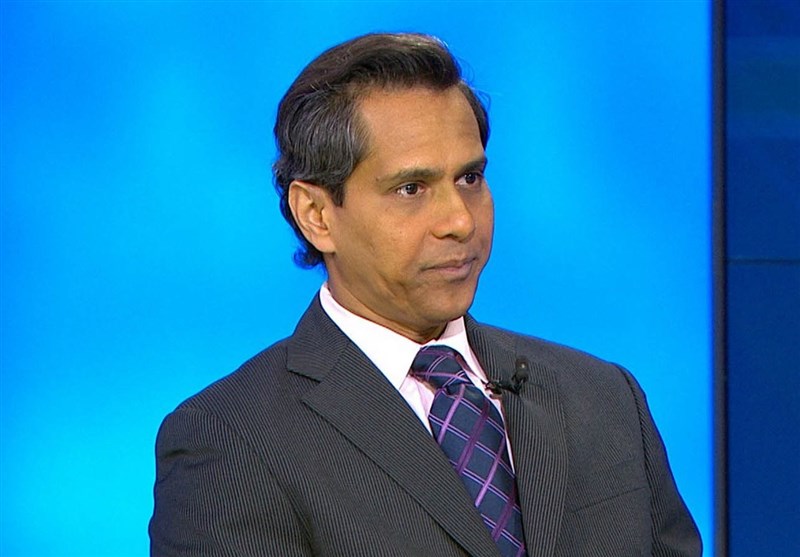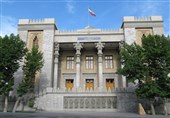Analyst Predicts Fierce US-China Trade War in 2018
TEHRAN (Tasnim) - A senior political expert said 2018 could witness a full-blown trade war between the US and China, saying such an encounter between the two big economies could disrupt the global trading system and damage many economies relying upon the US and Chinese markets.
In an interview with Tasnim, Sourabh Gupta, a senior specialist in Asia-Pacific international relations policy, explicated the process China is going through to overtake the US in economic nominal terms and dominate the global economy sooner than expected.
He also predicted severe trade rivalries and tensions between Washington and Beijing in 2018, saying that any US punitive measure against China would not go unanswered.
Mr. Gupta is a senior fellow at the Institute for China-America Studies (ICAS), a Washington, DC-based think tank, and has considerable experience in political risk research and advisory capacity.
He is also a member of the United States Council for Security Cooperation in the Asia-Pacific (USCSCAP) and was a 2012 East Asia Forum Distinguished Fellow. Prior to joining ICAS, he was a Senior Research Associate at Samuels International Associates, Inc, a diversified international consulting firm specializing in government relations, business, and trade and investment matters.
The following is the full text of his interview with Tasnim:
Tasnim: There are predictions that China’s share of global gross domestic product (GDP) will outnumber that of the US in 2018, meaning that China’s economy will become the most significant in world. Is China really going to overtake the US in the new year and become the world’s top economic power?
Gupta: China’s share of global gross domestic product already outnumbers that of the US, as per the purchasing power parity (PPP) methodology that the International Monetary Fund (IMF) and the World Bank (WB) employ.
As per GDP measured at current market prices however, the US economy is still a third larger than China’s. The important point to take away in this comparative context though is that most commentators had expressed the view at the turn of the century that China would surpass the US in PPP terms around 2020. And that it would surpass the US at nominal prices in the early 2030s. In fact, China overtook the US in PPP terms by 2015 and will overtake the US in nominal terms by the mid-to-latter part of the 2020s. The China-dominated future is arriving faster than was anticipated!
Tasnim: In the recently released National Security Strategy of the US, Donald Trump has voiced concern about China’s growing influence in the world. “China is gaining a strategic foothold in Europe by expanding its unfair trade practices and investing in key industries, sensitive technologies, and infrastructure,” the document says, blaming China for “stealing US intellectual property valued at hundreds of billions of dollars.” What reasons do you see behind such harsh US attitude towards China for the forthcoming year?
Gupta: President Donald Trump’s harshly-worded concern about China’s growing international influence and domestic economic practices is not a surprise. Candidate Trump had campaigned on an unabashedly anti-trade platform, with China listed as a key economic violator and three of seven points of the centerpiece of his economic plan to rebuild the American economy and “Make America Great Again” were in fact outright protectionist initiatives that were aimed at China. During his first year in office, he gave his mainstream economic advisors and cabinet officials, such as Gary Cohn and Steven Mnuchin, the benefit of doubt with regard to managing China policy and reducing the huge trade imbalance between the two countries. With little progress to show on this trade deficit reduction front as well as in terms of prizing the huge Chinese market open to accelerated US exports, President Trump has effectively pivoted towards his more hardline and nationalist advisers, such as USTR Robert Lighthizer and Peter Navarro. Their punitive and protectionist-minded views, which aim to unilaterally punish China for its alleged economic aggression and IPR theft, is now effectively becoming the Trump Administration’s policy. Lighthizer in fact had an outsize role during the drafting of the National Security Strategy (NSS) document, which is unusual because USTR’s typically have a marginal say in a document that is primarily confined to geo-strategic and security considerations. Besides, these unilateralist views instinctively accord with Trump’s own philosophy about Asia’s supposedly mercantilist practices and the harmful role of trade deficits.
Tasnim: Some believe that the US has succeeded in maintaining an appropriate balance between free markets and government control, enabling its economy to grow steadily and remain at top of the world. Do you believe that China has the necessary infrastructures and long-term plan to compete with the other powers and secure its place as the world’s largest economy?
Gupta: Yes, China has the necessary infrastructure and long-term planning capability to break through the ranks of middle-income countries and become an advanced modern economy – just like Japan, South Korea and Taiwan did. Of course, China faces a significant challenge in the years ahead as it transitions from its investment-led model to a more services and consumption-led growth model. None of its East Asian predecessors was able to make this transition smoothly, which was a function of the inherent investment and manufacturing-led bias of the East Asian growth model. Each of these countries (Japan, South Korea and Taiwan) has had difficulty with the issue of managing deficient aggregate demand and China too will face this challenge and could see a sharp decline in its growth rate if it fails to liberalize appropriately.
This having been said, there are still powerful growth motors embodied within the Chinese economy. Although China no longer enjoys a young demographic profile (it has aged), it has only reached the mid-way stage, or a bit beyond, in terms of its transition from a rural to an urban economy and from being a control economy to a pro-market one. These latter two transitions embody great economic potential and possibilities and, harnessed well, could continue to enable China to grow at a rate of 5 percent or higher for the next two decades.
Tasnim: Fears are high that 2018 could see an escalation of trade tensions between the US and China given their political differences. What do you think about the consequences of such rivalry for the other markets and economic sectors in the world?
Gupta: Yes, there will be a significant escalation of trade tensions between China and the US during the first half of 2018. In this regard, the Section 301 investigation of Chinese technology transfer, intellectual property rights (IPR) and innovation practices, which is coming due during the first half – and perhaps first quarter - of 2018, will serve as the key vehicle for the hardening stance towards China. It remains to be seen whether the Trump Administration, after concluding the investigation phase of the 301 probe, will unilaterally move into the penalty phase and impose significant retaliatory action against China. Or whether it will first bring a case at the WTO in this regard. Since the late-1990s, USTR has interpreted Section 301 to require that any alleged violations of US rights be first taken up within the WTO’s dispute settlement mechanism. As such, since the late-1990s, USTR has not imposed unilateral sanctions under Section 301 authority. The Trump Administration however is expected to do exactly the opposite and, departing with precedent, impose unilateral Section 301 trade enforcement measures on China. Of course, China will challenge this action at the WTO and in most likelihood win its case against the US. But if the retaliatory remedies imposed unilaterally by the Trump Administration are large, China will not sit back quietly. It will exact retaliatory action of its own, which could be imposed on products that range from agricultural goods to civil aircraft to rare earth materials. By the end of 2018, we could be looking at a full-blown trade war which, given the enormous economic size of the two countries, could severely disrupt the global trading system as well as damage a whole host of economies which depend on the US or Chinese market as a consumption or production base.





